With hundreds of chicken breeds to choose from, choosing the right breed for yourself can be confusing or even just plain befuddling. I highly recommend that you consider raising Marans. Why? They are hardy, friendly, good laying, and pretty cute, too.
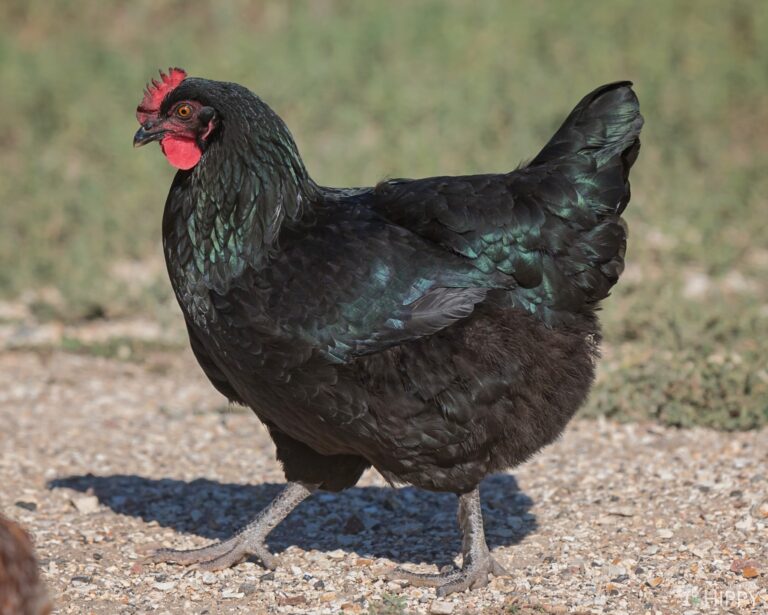
In this article, I’m going to lay out all the info you will need to know to make an informed decision when considering raising Marans. Hopefully, I can convince you to give this beautiful breed a spot on your homestead.
Table of Contents
Quick History of the Breed
The origin of the Marans chicken breed is a town by the name of Marans in France.
Sadly, the breed started as fighter chickens in the 1200s for the entertainment of sailors on long journeys… Winners were traded or used for food when the sailors were done with them.
The breed was almost lost during World Wars 1 and 2, and again in the 1960s to the 1970s when farmers became frustrated by their low egg-laying capacity.
Thanks to lovers of the breed, the breed has bounced back considerably. However, they are still not out of the danger zone. They are still an uncommon breed.
Why Raise Marans Chickens
- Marans chickens are plump and so pretty.
- Their eggs have a beautiful coloring.
- They are calm and therefore easy to handle.
- They are hardy.
- There are several beautiful color varieties to choose from.
Overview of the Breed
| Also known as | Poule de Marans |
| Origin | France |
| Appearance | Plump, trapezoidal shape |
| Colors | Cuckoo, black, black-tails buff, wheaten, Columbian, white, black copper, blue birchen, golden cuckoo |
| Purpose | Meat, eggs |
| Egg Production | 3 to 4 eggs per week |
| Bird Size | Large |
| Hens Weight | 5 to 6 pounds |
| Roosters Weight | 7 to 8 pounds |
| Mature | 35 weeks |
| Lifespan | 7+ years |
| Temperament | Docile |
| Noise Level | Normally quiet but loud if they are under stress |
The Differences Between French Marans and English (British and American) Marans
English Marans are more popular in America than French Marans. The difference between the two is that the legs and feet of French Marans are covered with feathers, while the English Marans have little to no feathers on their legs.
Physical Characteristics
If you look at a Marans chicken from the side, you should see a distinct V shape running from their heads – which they hold high – to their bodies, and then to their tails – which they also hold high.
If you think of a plump hen, you can picture a Marans hen. With their plump, round bodies, they are beautiful birds to keep.
They have:
- orange eyes;
- single, medium-sized, red combs;
- red wattles; large earlobes;
- white skin; white feet;
- and their shanks are slate or pink.
They are large birds, with hens weighing 5 to 6 pounds, and roosters weighing 7 to 8 pounds.
Color Varieties
There are nine recognized Marans breed colors in the USA:
1. Silver Cuckoo
The silver cuckoo is often referred to simply as the cuckoo Marans.
Silver cuckoos can range from light gray to golden brown. The lighter colors are barred in the darker feathers. Their legs are pinkish-white, and they do not have feathered legs or feet.
Hens and roosters differ inside and out…
Hens are slightly smaller than roosters weighing in at 6 pounds. Their legs are smaller than the legs of the roosters. Hens’ feathers are darker than the feathers of roosters. Hens have short and straight tail feathers.
Between the ages of 4 to 6 weeks old, the comb of the hens is small and a yellow to orange color. As adults, the comb is small and red.
Roosters weigh, on average, 7 pounds. The rooster’s feathers are much lighter than the hens. The legs of the roosters are thick, and their tail feathers are long and flashy, and curve downward.
At 4 to 6 weeks old the roosters comb is large and bright yellow. As adults, their combs are large and bright red.
Sexing males and females is easy in chicks. On top of their heads is a clear, light spot. Females have a small head spot as opposed to the roosters’ large head spot, which is also paler than the hens.
Hens and rooster’s personalities are also very different. As chicks, hens shy away from any boisterous interactions with other chicks.
As roosters, the phrase “boys will be boys” springs to mind. As chicks, roosters will take any opportunity to playfight.
2. Black
The black Marans is the oldest but, sadly, the rarest Marans chicken. It is believed it’s extremely close to extinction.
If you can help replenish these beautiful chickens, and if you can get hold of some to breed, please do.
Black Marans have no colored feathers; they are completely black.
3. Black-Tailed Buff
Black-tailed buff Marans are uniformly colored on a scale ranging from light to deep red shade. The tails are predominately black but can have a brown edging on the tips of the feathers.
Hens can easily be mistakenly identified as wheaten Marans due to their striking similarity in appearance.
While wheaten Marans are a creamy color, black-tailed buff Marans are a golden-red color. The color of the feathers is smoother with fewer contrasting colors.
Black-tailed buff Marans have light black stippling on their hackles.
4. Wheaten
They are adaptable, busy bodies that love to roam and forage.
They have feathered legs. Hens are a lighter shade of wheaten color than roosters who have much darker feathers.
They are very docile and friendly Marans.
Wheaten Marans are very pure and are one of the more stable and common than other colors.
Roosters have a distinct gold cape with pearl legs and beaks.
Hens have a dark mahogany with light fawn under their abundance of fluffy feathers. There are a multitude of color shades from dark to light gold feathers. Their necks have golden brown feathers with a light gold edging.
5. Columbian
Columbian Marans are very rare. If you find a supplier, please pitch in and help conserve these beautiful birds.
They are predominantly black. The Columbian Marans have white with light copper-colored necks and tails as well as on the tips of their wings.
The hens are especially black. Hens are somewhat broody and make excellent mothers.
They are very mellow birds. They adapt well to cold temperatures. They can live to be 12 years old; way older than other colors.
They are calm but chatty birds – I guess there’s always something to gossip about.
6. White
White Marans are pure, bright white with only a hint of yellow over the neck, saddle, and shoulders.
Unlike all the other colored Marans, their legs and beaks are a more noticeable yellow.
Sadly, white Marans are very rare. Inbreeding has damaged the gene pool and crossbreeding has done even more damage.
7. Black Copper (also known as brown-red)
Black copper Marans are also known as brown-red Marans. Their under-coat feathers are grey, and the feathers on their backs are copper-colored.
While they are common in France, in the USA the copper Marans is the rarest within the breed because of an import ban. They are also rare in the USA because of the limited genetic pool. This is a common problem in all breeds with limited populations.
The French Marans have light feathering on their legs. The English and American Marans have been bred so that they do not have feathers on their legs.
Copper Marans have a grey undercoat. The roosters have black feathers, an orange head, and a neck brace with gold to orange to yellow feathering on the bottom.
They have black wings with a black, translucent breast. Their most noticeable physical characteristic is the copper feathering layered over the black feathers on the neck and saddle.
One look at those and you would think they would glow in the dark. They are truly remarkable.
The chicks are very different from adults. They normally have black, brown, or red feathers with lighter feathers spread over their bodies. They are the cutest little chicks you ever will see.
Hens are smaller than roosters. They are also black with copper over their neck, head, and saddle; however, they have fewer copper feathers. Their black feathers may have a green tint.
8. Blue Birchen
First off, birchen is not a color; rather, it is a pattern. Birchen Marans can also come in silver, black, or splash.
The light pattern and silky appearance of the feathers make it look like they are covered in the finest silk rather than feathers.
Blue birchen Marans have black feathers across their whole bodies, but you will have to look closely to notice them.
This is because of the stunning silvery blue feathers that each have a black stripe running down the middle of each feather, that abundantly overlay the black feathers.
Blue birchen Marans are very popular birds, however, sadly, blue birchen Marans are very rare and therefore hard to find.
They have significant blue feathers with copper hackles. Most – particularly French but also some English – have some feathering on their shanks and feet.
9. Golden Cuckoo
Golden Cuckoo Marans look very similar to standard cuckoo Marans (silver cuckoo).
The distinction between the silver and the golden Cuckoo Marans is that the golden Marans have distinct golden bars across their heads, backs, hackles, and feathers on their legs.
Hens are darker than roosters. Hen’s heads are a lighter gold, and their necks turn gray or silver with deeper golden spangling. Their tail feathers are dark but do have some light edges.
The roosters are the stars of the show. They have large wattles and combs. Their heads, wings, and saddles are covered with bright golden and copper stripes.
10. Other Colors
There are several other colors that are not recognized by the American Poultry Association. These are every bit as beautiful as the recognized standard Marans.
These include:
- Dark Cuckoo
- Copper Blue
- Silver Black
- Blue
- Black Copper
Lifespan
Marans chickens can live shorter or longer lives depending on the specific type. Their average lifespan is 6 to 8 years.
Temperament
Marans chickens are highly recommendable for brand new chicken keepers.
They are very docile, easy-to-handle birds that will quite possibly jump through a fiery hoop for a treat.
They can be wonderful pets for kids (providing the child is old enough and gentle enough with them and understands that not every animal wants to be given bear hugs) and companions for the whole family (especially if treats are involved).
Roosters can be testy. What you put in is what you get out. This is true of almost every animal on earth.
If you handle your rooster with kindness and respect, he will be your friend (especially if treats are involved).
Roosters are very good at communicating dangers in their surroundings by being very vocal. It is always a good idea to listen and react if your rooster sounds the alarm.
They could be reacting to anything from a hawk to a mongoose to a fox. They are territorial and if you do not belong, you will be yelled at!
Marans are very active birds that like a larger area to shop for grubs in.
Because of their docile personalities, they fit in well with other chickens, ducks, geese, goats, horses, and anything else that does not eat chickens on your homestead.
They can be introduced into an existing flock of birds with little to no issues.
Climate
Marans chickens do not like extreme heat or extreme cold.
Their accommodation will need to be appropriate to the climate in your area. This means shelter from rain, snow, heat, and cold.
They can suffer from extreme frostbite on their combs and wattles.
They are best suited to humid climates.
Noise
Marans are not particularly noisy birds. They tend to celebrate the production of an egg, announcing the big occasion with vocalization.
The roosters do crow loudly, and if the flock is in any danger, they will get very loud.
If you live in an urban or suburban area that allows chickens, the Marans are a good breed to go for as they will not annoy the neighbors – much.
Raising Marans
Raising Marans is very easy. They require good food, good shelter, access to clean water, a sand bath, nests, and a safe coop with clean bedding.
They need access to dry sand to keep their legs clean.
As with any chicken breed, a healthy environment is very important with good hygiene practices in place.
They can be raised in runs, but they prefer to be free-range with a larger area to roam.
Check your chickens regularly for mites and parasites and treat the whole flock if you see any. In addition to treating the birds, their coops, nests, and runs will all need to be properly treated to kill off the parasites and the diseases they carry.
Free Range, Runs, and Coops
Where and how you house your chickens is very important.
Marans need 4 square feet per bird, whether in runs or free range.
The more space they are given, the happier they will be. They should have access to cover from cold, wet weather and heat.
Their coops do not need to be large if they are let out of the coop every morning and only go in to sleep or lay eggs.
On that note, the coop should be accessible to the birds 24/7 but should be constructed well and properly secured at night to protect the birds from predators.
When constructing your coops and runs, design these with the weather in your area in mind and also use the most secure materials possible.
I can tell you what worked best for me. I built runs constructed of bricks on a cement floor with drainage running down the sides of the run.
Each run opened up into a sizable outdoor area for them to forage and scratch about in.
The climate in South Africa can fluctuate radically and rapidly. The brick runs are easy to warm in winter and cool down in summer (with fans).
Runs should be well ventilated to protect the birds from airborne respiratory disease.
The cement floors are very easy to clean; they can be mucked out daily and washed clean with a good viral and bacterial cleaning agent that will also kill off parasites like mites, fleas, and ticks.
Hay, straw, or wood shavings make good bedding on top of cement and in nests.
Nests are needed to make the chickens feel at home and give them a safe space to lay their eggs.
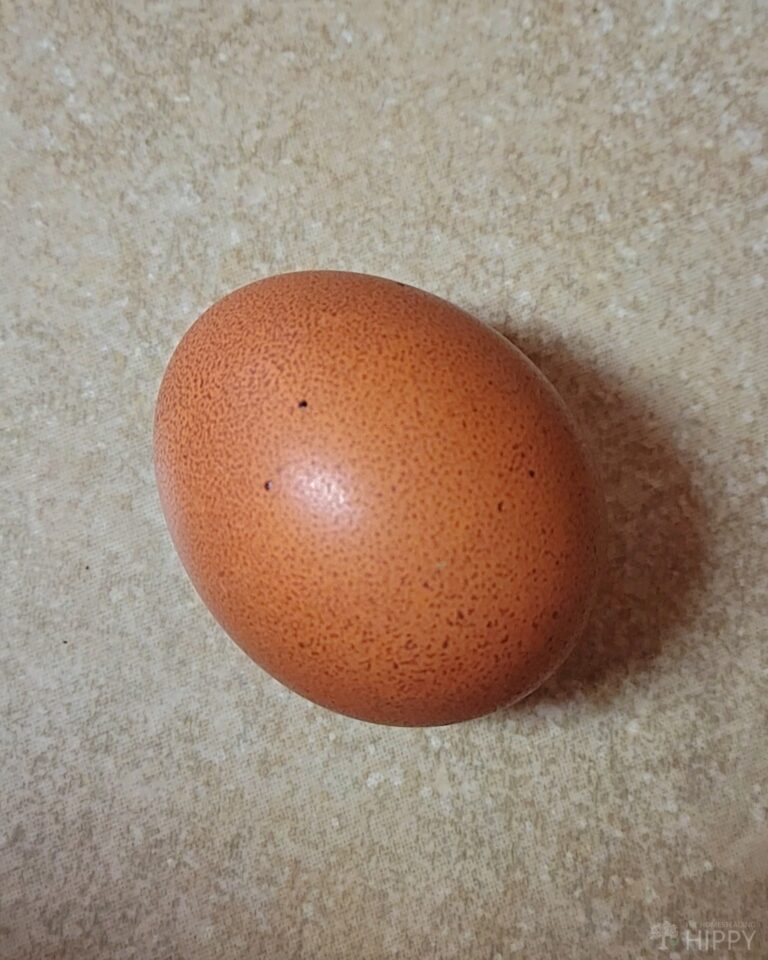
Eggs
Marans are good egg layers, but the appearance of their eggs is more remarkable than the number of eggs produced.
Marans hens only mature at 35 weeks, that is when they start laying eggs. They will continue to lay eggs for the next 6 years of their lives.
They lay 3 to 4 large eggs per week (+/- 200 eggs a year).
The eggshells are dark chocolate brown. They are the darkest brown eggs of all chicken breeds.
However, as the hens age, their egg color will lighten; they will still be brown, just not dark brown.
Poor nutrition, poor living environment, and exposure to disease can all affect the color of their eggs.
The other thing that can affect the color of the eggs is how long the eggs remain in the oviduct. The longer they stay in there, the darker the color.
Hens are not very broody, but they do make excellent mothers.
Of all the color varieties, the black copper lays the darkest brown eggs.
Meat
Because it takes, on average, 6 months to mature, the meat of Marans can be very pricy if store-bought.
The meat is of a very superior quality. It tastes delicious, is tender, and is very juicy.
Exhibition
Marans have only recently been gaining popularity in the exhibition scene.
The first Marans to enter the exhibition scene, where they won the award as ‘Country Hen’.
However, it was their beautiful brown eggs that shot them to fame.
Pets
Marans are loving, devoted pets that are very easy to handle. Because of their docile nature, they make wonderful pets.
The black copper Marans have the gentlest nature and as such, they are the best if you are looking for a pet.
Make sure your kids do not get overly enthusiastic when hugging them. Teach your kids to play nice and always be gentle with these lovable birds.
Common Illnesses
Marans chickens are among the hardiest of all chicken breeds. They do not suffer from any breed-specific illness.
This does not mean they are immune to all illnesses; it just means that there are no diseases that are specific to their breed.
As far as Marans are concerned, you’re more likely to encounter problems with matting on the feathers on their feet and legs than fighting a major dread disease.
You still need to be aware of avian illnesses that could affect your chickens, and it is advisable to vaccinate all your chickens against any illnesses they could be exposed to in your area.
1. Viral Diseases
Viral infections are a particularly dangerous problem in chickens as they can be passed through food and water troughs, and they can be airborne. This means they can spread within minutes of exposure.
Make sure you buy from a reputable breeder and vaccinate.
2. Bacterial Illnesses
Bad bacteria are everywhere. It is in the dirt your chickens scratch about in, in the bedding of the nests, food, and water troughs, and every nook and cranny.
Bacterial infections live in poor hygiene and environmental situations. The best defense is an offense. Use foot baths at the entrances to runs and coops. Muck out bedding at least once a week.
Wash off the cement flooring (this is why I went with cement) using a strong disinfectant. Make sure you wash in the corners and under nests or raised structures.
3. Fungal Diseases
Two types of fungal infections affect chickens; these are Aspergilloses (brooder pneumonia) and ringworm.
The only thing you can do for your chickens is clean their runs and nests thoroughly often until the disease has worked itself out.
Practicing good hygiene is the only way to avoid and treat these infections.
You can use antifungal medication to help your chickens survive.
4. Parasitic Infection
Parasites are probably the most common threat to your chickens.
They can feed off of the blood of chickens or inject infection into the chickens. They are an absolute menace!
Disinfect runs, coops, and nests regularly. Supply clean dust baths twice a week. Replace your chickens bedding often.
5. Egg Binding
Egg binding is an extremely serious, painful, and life-threatening condition that occurs when an egg gets stuck between the uterus and the cloaca.
If you’re paying attention to each chicken’s egg-laying production, you will notice a hen that is not laying. Sadly, a trip to the vet is the only way to help your hen survive.
6. Pasty Vent / Butt
As absurd as this sounds, I have washed many, many, many chicken butts in my life! All jokes aside, pasty butt can be life-threatening.
Caused by stress and dehydration, thick fecal matter blocks the chick’s vent obstructing defecation.
A good rule of thumb (in my experience) is that for the first 10 days, you should wipe your chicks’ butts twice a day using a warm, moist cloth. I’ve always done this for all my chicks. It is super easy to prevent this condition.
An added benefit is that handling the chicks when they are tiny will make it easier to do when they are older.
Broodiness
Just like all the rest of us, some Marans hens will be broodier than others.
As a breed, Marans chickens are not nearly as broody as a silky hen. But those who do go broody do so with everything they have.
They make wonderful attentive mothers. But getting them to sit long enough to hatch a clutch is not for all.
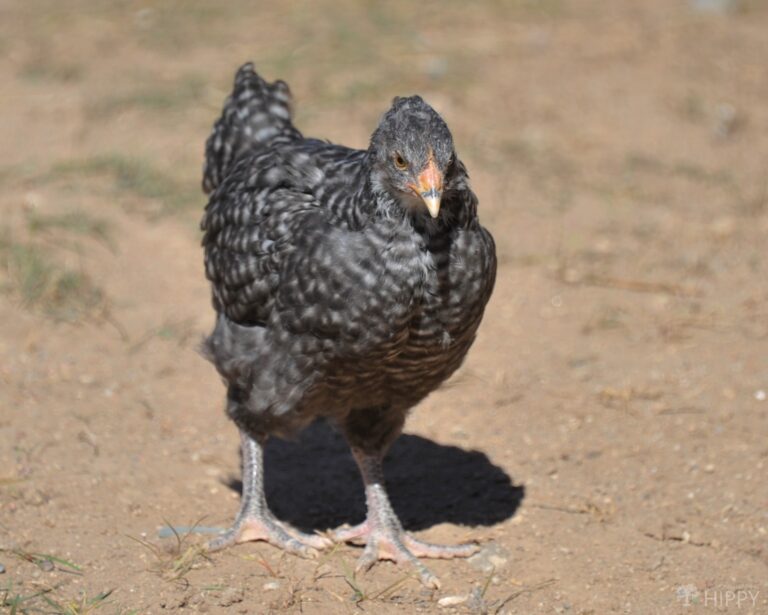
Diet
Up until 6 weeks old, you should feed your chick’s grower’s mash. Grower’s mash is a source of highly nutritious supplements that help prevent coccidiosis and help the chicks grow bigger and faster while developing good bone structure. It contains 15 to 16% protein.
After 6 weeks, you can start mixing in a small amount of layers mash or pellets into the grower’s mash until you are no longer using the grower’s mash (6 – 8 weeks).
Marans love to forage for their own food. This is great news for your wallet. Free range really is best.
You can supplement their foraging with some extra seeds, mealworms, and grain. They will also love some healthy kitchen scraps, provided they have not been in contact with any salt or seasoning.
Conclusion
If you are in the market for a good-natured layer that also masquerades as a delicious Sunday lunch, A Marans chicken can be the perfect choice.
Their meat is plentiful and juicy, and their eggs are as tasty as they are beautiful.
They are hardy and require very little human intervention. However, they can be very affectionate and bond closely with their human friends.
I am sure you will be delighted with whatever color you choose. Let me know your favorite in the comments below!
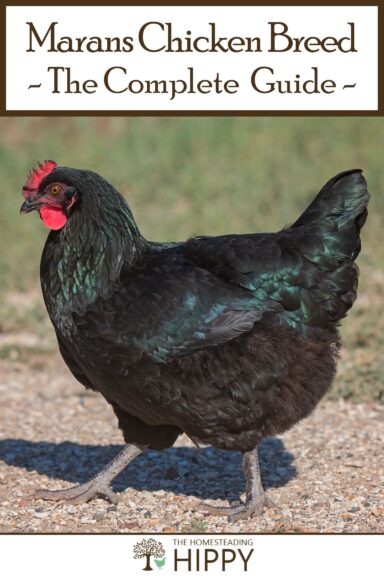
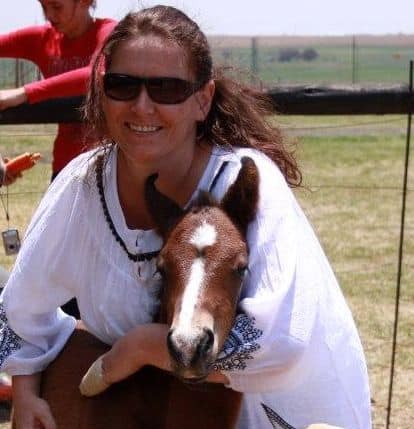
Di-Anne Devenish Seebregts was raised in an environment where daily life consisted of hiking, environmental conservation, growing fruit and vegetables, and raising poultry for meat and eggs.
She combined her passion for the writing word with her love of the pride that comes with not relying on others. She raised three children (who are now adults) to value the environment, and understand the value of being self-sufficient.
Find out more about Di-Anne on our About Us page.
